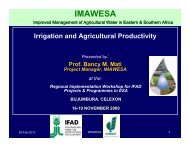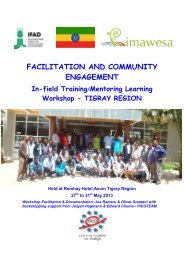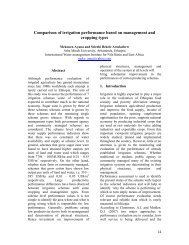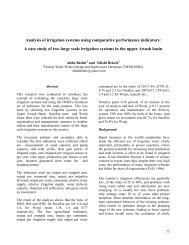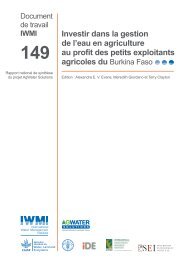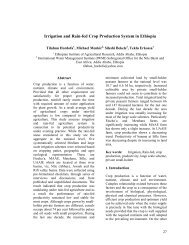Manual - Participatory rapid diagnosis and action ... - FAO.org
Manual - Participatory rapid diagnosis and action ... - FAO.org
Manual - Participatory rapid diagnosis and action ... - FAO.org
Create successful ePaper yourself
Turn your PDF publications into a flip-book with our unique Google optimized e-Paper software.
52 Annex A. Description of toolsspecific <strong>and</strong> closed with a fixed choice (yes/no; a/b/c/d) or open-endedquestions.Fixed choice questions are good for gathering data that need to beanalysed statistically.3. Agree on how many people should be interviewed. You probablydo not have to interview all the farmers of the irrigation scheme.But interviewing too few people will produce unreliable results.An alternative is to make evaluations after every five interviews. Ifeveryone has the same answers you probably need to conduct fewerinterviews than for those who have different answers.4. Test the questionnaire on one or two farmers to make sure that thequestions are underst<strong>and</strong>able <strong>and</strong> that they are able to answer themaccurately. This is also a good way to train the interviewers whowill carry out the remaining interviews. When necessary, change orleave out questions after testing before deciding on the final list ofquestions.5. Perform the remaining interviews. It is important not to changequestions after deciding on the final list to enable comparison ofresults.6. Analyse the information. Start with summarizing the results in a table.Calculate mean values <strong>and</strong> other statistics when necessary.Semi-structured interviewWhyUsually several broad questions are used to guide the discussion in order togain in-depth information on specific topics, but new questions may ariseduring the interview. This allows people to talk about unintended impacts(positive or negative) or opinions about the quality of services.How to1. Agree on the purpose <strong>and</strong> information needed from the questions.2. Prepare a list of discussion topics or questions.3. Agree on who/how many people should be interviewed <strong>and</strong> whetherthey should be conducted with individuals or in a group.4. It is a good idea to test the questions on one or two people if youare going to perform many semi-structured interviews (Table A3 <strong>and</strong>Box A3). When necessary, change or leave out questions after testingbefore deciding on the final list of questions.




